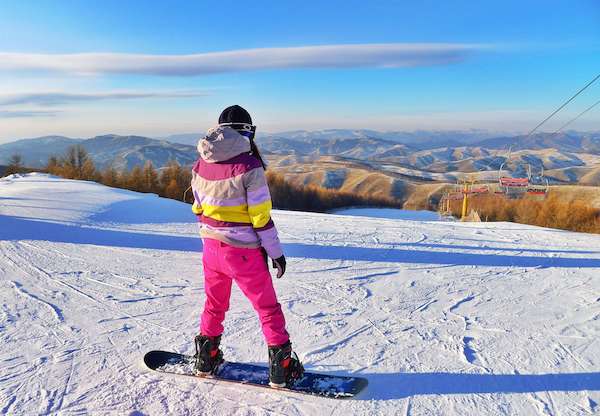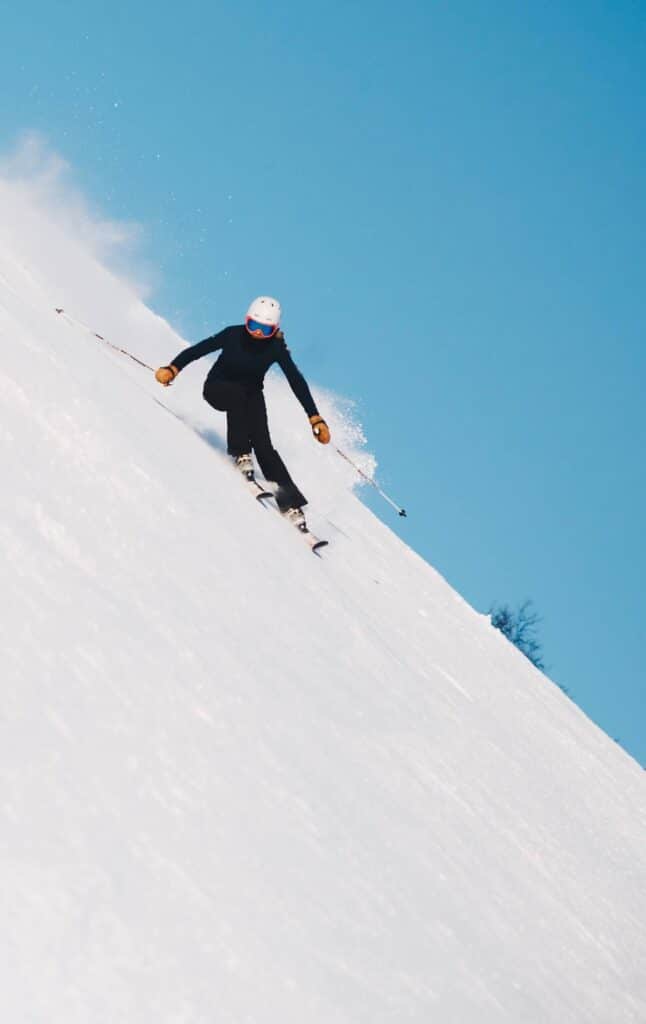Skiing and snowboarding have become the most popular winter sports. They are fun and a great activity for the whole family. Skiing has been around for a long time, being first introduced as a sport in the Winter Olympics in the 1930’s. By comparison, snowboarding is a young sport, that became officially an Olympic sport in 1998.1 Και τα δύο αθλήματα θέλουν προσοχή, καθώς μπορούν να οδηγήσουν σε τραυματισμούς και να μας χαλάσουν τις χειμερινές διακοπές. Αν και οι περισσότερες κακώσεις στα αθλήματα αυτά είναι ήπιες και αντιμετωπίζονται με ξεκούραση, περίδεση και αντιφλεγμονώδη, χρειάζεται εξαιρετική προσοχή, καθώς ορισμένοι τραυματισμοί χρήζουν χειρουργικής αντιμετώπισης και πολύμηνης αποκατάστασης.
Table of contents


Epidemiology – Statistics
No anatomic location is exempt from the risk of potential injury. However, it seems that the patterns of injury are a bit different between sports. Snowboarders are more likely to injure their wrist, whereas skiers are more likely to get an ACL injury.2
Snowboarders seem much more likely to sustain an acute injury overall, as compared to skiers.3 This is probably because of the more frequent falls sustained because of the inherent nature of the sport. Another reason is that ski equipment has been modified to prevent injuries.
Skis are programmed to come off at more appropriate times during a crash, whereas snowboards don’t come off. However, when it comes to a real serious injury, skiers are still at higher risk (US National Ski Areas Association). Skiing is all about racing, whereas snowboarding is all about tricks and manoeuvres.
As a result, a skier is more likely to experience a high-speed collision leading to a high-energy injury. On the contrary, a snowboarder sustains frequent falls at lower speed, that may lead to minor injuries.
Knee injuries
Knee injuries are more common in skiers rather than in snowboarders, in major part due to differences in fall mechanism, general stance and equipment used.4 Skiers undergo much higher torsional forces, placing the knee at risk of ligamentous injury.2
ACL rupture typically occurs as a result of valgus load and internal rotation, after the inner side of the ski catches in the snow while going downhill and the boot fails to come off (slip catching).5 MCL tears and meniscal tears can also occur. Most ACL tears will require surgery (ACL reconstruction) in active individuals or athletes.
Although less commonly, experienced snowboarders that perform risky tricks and jumps can also get a serious knee injury. Fractures, such as tibial plateau, tibial plafond, or tibial shaft fractures (“boot-top fractures”) may also occur with both sports. Most of these typically require urgent surgical fixation.


Foot & ankle injuries
Τα διαστρέμματα και κατάγματα της ποδοκνημικής άρθρωσης είναι πιο συχνά στο snowboard και πιο σπάνια στο σκι, όπου η βελτίωση του σχεδιασμού του εξοπλισμού μείωσε αυτές τις κακώσεις σημαντικά.6 Οι snowboarders είναι επίσης ιδιαίτερα επιρρεπείς στο κάταγμα της έξω απόφυσης του αστραγάλου, ή “snowboarder’s fracture”.7 Δεδομένου ότι το κάταγμα αυτό μπορεί εύκολα να διαλάθει στις απλές ακτινογραφίας, επί υποψίας συνιστάται αξονική τομογραφία. Πολύ συχνά είναι και τα κατάγματα των μεταταρσίων, ιδιαίτερα μετά από προσγείωση από άλμα.7
Hand & wrist injuries
Wrist fractures are the most common fractures seen in snowboarders, even though they are commonly seen in skiers, too.8 They typically result from a fall on the outstretched hand. Many of these can be treated conservatively in a cast, but angulated, widely displaced fractures may need surgery.
Ο τραυματισμός του ωλενίου πλαγίου συνδέσμου του αντίχειρα λέγεται και αντίχειρας του skier. Ο τραυματισμός προκαλείται από την βίαιη απαγωγή του αντίχειρα μετά από πτώση με το μπατόν στο χέρι. Η θεραπεία εξαρτάται από το βαθμό της κάκωσης, με την χειρουργική αντιμετώπιση να ενδείκνυται σε ασταθείς βλάβες.4
Shoulder injuries
Fractures are common in snow sports after a fall on the shoulder. Clavicle fractures may occur in both skiers and snowboarders. The frequently involve the midshaft of the clavicle and can be treated nonoperatively if stable and not widely displaced. Shortened and displaced fractures with skin tenting usually require surgery.
Proximal humerus fractures and AC joint injuries are also common. Shoulder dislocations may also occur in skiing and snowboarding. Dislocations should be reduced as soon as possible. Subsequent management will depend on factors such as age, history of recurrent dislocations, concomitant injuries.9
Head injuries
Οι κρανιοεγκεφαλικές κακώσεις μπορεί να συμβούν μετά από πρόσκρουση με μεγάλη ταχύτητα σε κάποιο εμπόδιο (δέντρο, πέτρα, ski lift), ή σε κάποιον που προσγειώνεται άτσαλα μετά από ένα άλμα. Το εύρος των κακώσεων ποικίλει από μια διάσειση σε μια σοβαρή κρανιοεγκεφαλική βλάβη. Οι βλάβες αυτές αποτελούν την κύρια αιτία θανάτου στα χειμερινά sport. Είναι εξαιρετικά σημαντικό να αναγνωρίζονται έγκαιρα οι δυνητικά σοβαρές κρανιοεγκεφαλικές βλάβες που χρήζουν άμεσης διακομιδής σε τριτοβάθμια νοσοκομεία.
Prevention
Lessons from expert instructors are extremely important before attempting to hit the slopes. The teacher will teach the beginner not only the correct technique, but also the correct use of the equipment. Malfunctioning or incorrectly fitted equipment, such as too loose or too tight bindings, or equipment that is not the correct size, or that is still unsuitable for the conditions or type of snow, can lead to serious and easily avoidable injuries.
Εξαιρετικά σημαντική είναι και η χρήση προστατευτικού εξοπλισμού, όπως κράνη, περικάρπια ή κηδεμόνες γόνατος. Οι περισσότεροι τραυματισμοί μπορούν να αποφευχθούν εφαρμόζοντας την κοινή λογική. Ο χιονοδρόμος θα πρέπει να είναι καλά ενυδατωμένος, να αποφεύγει τη χιονοδρομία σε συνθήκες σωματικής κόπωσης, και να λαμβάνει πάντα υπόψιν τις καιρικές συνθήκες και την κατάσταση του χιονιού της πίστας (πάγος, σκόνη, απάτητα σημεία, σημεία εκτός πίστας). Τέλος, τα παιδιά χρήζουν ενήλικης επιτήρησης.
Δεν θα πρέπει, τέλος, να ξεχνάμε ότι όσο πιο γυμνασμένοι και προετοιμασμένοι είμαστε, τόσο θα μειώσουμε την πιθανότητα να σημειώσουμε τραυματισμούς. Ειδικά σημαντικές για τα χειμερινά αθλήματα είναι ορισμένες μυϊκές ομάδες, τις οποίες καλό είναι να εξασκήσουμε πριν τις χειμερινές διακοπές. Εξαιρετικά σημαντικοί είναι οι τετρακέφαλοι (quadriceps), οι οπίσθιοι μηριαίοι (hamstrings) και οι γλουτιαίοι (gluteal muscles). Εξίσου απαραίτητη είναι η δύναμη του κορμού μας (core strength).
Frequently Asked Questions
What are the most common skiing injuries?
– ACL/PCL tears
– Meniscal tears
Find us
Book an appointment with us today

